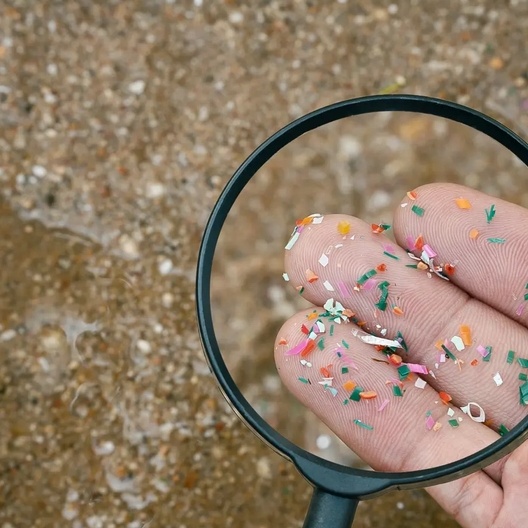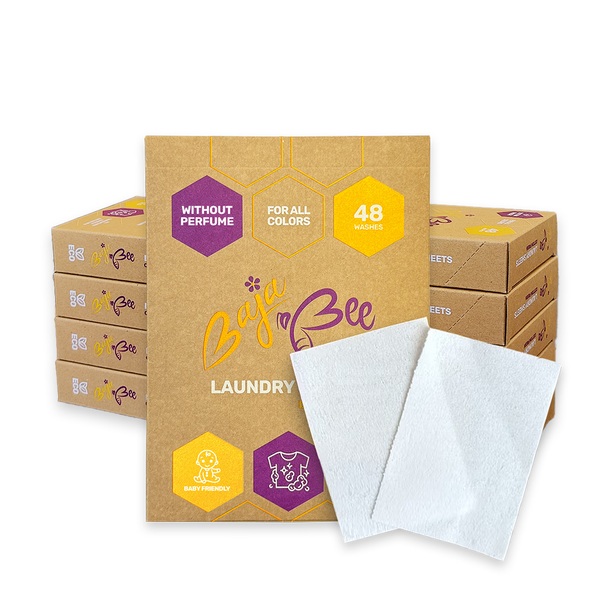
Microplastics in the Household: The Silent Enemy We Rarely Talk About
Microplastics – those tiny, invisible plastic particles smaller than 5 mm – are all around us. They’re found in food, water, air, and even inside our bodies. While ocean plastic pollution often grabs the spotlight, less attention is given to how microplastics enter our homes. This is where our brand philosophy comes in: avoiding microplastics isn’t just a trend, it’s a core pillar of our sustainable lifestyle. In this article, we’ll explore where microplastics hide, how washing worsens the problem, and how our laundry sheets are changing the game.
1. What are microplastics and where do they come from?
Microplastics form in two main ways:
- Primary microplastics – intentionally manufactured small plastic particles, such as microbeads in cosmetics (e.g., scrubs) or additives in cleaning products.
- Secondary microplastics – created by the breakdown of larger plastic items, such as synthetic fabrics during washing, tire abrasion, or the degradation of plastic packaging.
In households, microplastics are most commonly released from:
- Synthetic clothing (polyester, acrylic, nylon) – each wash can release thousands of microfibres into the water.
- Cosmetics and cleaning products – some still contain microplastics, even though their use is partly restricted in the EU.
- Plastic packaging and dishes – wear and heat (e.g., microwaving) release tiny particles.
- Dust and air – microplastics circulate in household dust, especially in homes with carpets or synthetic furniture.
These particles end up in rivers, oceans, and ultimately in our food. Studies show that 80% of drinking water contains microplastics, and traces have been found in human organs. We believe the solution starts at home: by avoiding products that contribute to microplastic pollution, we protect both nature and our health.
2. The difference between eco-friendly washing and regular detergents – why it matters in the fight against microplastics
Conventional detergents (gels, powders) are full of synthetic chemicals: phosphates, sulfates, parabens, and optical brighteners. These ingredients are not biodegradable – they persist in water for years, polluting soil, harming aquatic life, and contributing to microplastic formation. In addition, their packaging is often plastic, creating even more waste. Washing with such products releases microfibres from clothes directly into wastewater systems, where they can’t be filtered out by standard filters.
By contrast, eco-friendly washing relies on natural, plant-based ingredients (e.g., zeolite, soda, plant enzymes) that are 100% biodegradable. They break down in water within days into harmless elements like water and carbon dioxide – without toxins. They contain no microplastics or harmful additives, reducing fibre release and protecting aquatic ecosystems. The result? Laundry that’s just as clean, without the environmental cost. Research shows that eco-friendly detergents can reduce water pollution by up to 70% compared to conventional ones. Our philosophy of avoiding microplastics comes to life here: every wash is a step towards a cleaner world.
3. Laundry Sheets: an innovative solution
Laundry Sheets are the ultimate answer to the microplastic problem. These ultra-concentrated, dissolvable sheets are made from natural ingredients – free from plastics, phosphates, and synthetic fragrances. Packed in recyclable paper, they replace up to 5 kg of traditional detergent – zero waste, and with lower transport emissions.
How do they work?
- Place one sheet (for 5–7 kg of laundry) directly into the washing machine drum.
- Effectively removes stains at 30 °C, saving energy and water.
- Suitable for all fabric types – white, coloured, wool, and synthetics.
Practical benefits:
- Eco-friendly: 100% biodegradable and microplastic-free – prevents fibre shedding.
- Practical: Compact, travel-friendly; hypoallergenic, safe for sensitive skin and children.
- Cost-effective: One pack (48 washes) costs less than conventional gels and saves space.
With our Laundry Sheets, the fight against microplastics becomes simple – an everyday habit with every wash.
4. What can we do on a systemic level?
Beyond individual actions, it’s important to support systemic change:
- Support regulation: The EU has already banned microbeads in cosmetics, but stricter plastic legislation is still needed.
- Educate others: Share information about microplastics and their impact – the more people know, the greater the pressure on manufacturers.
- Support sustainable brands: Choose products from companies that minimise plastic use and promote recycling.
Microplastics are a silent enemy, creeping into our homes and lives with potentially serious consequences. Although it’s difficult to eliminate them completely, conscious choices can significantly reduce their presence. Let’s start at home – small steps towards a healthier life and a cleaner planet.

.jpg/resize?size=600&auth=MjgzNzc2NjU0)

